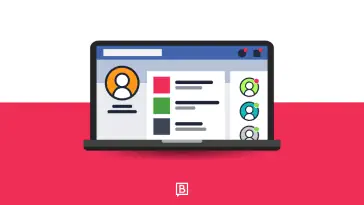Closing the feedback loop on social media is a game-changer for brands that want to thrive online.
By actively collecting, analyzing, and acting on social media feedback, you can transform raw insights into meaningful improvements that strengthen your brand and deepen your connection with your audience.
Let’s break it down …
Why Closing the Feedback Loop Matters on Social Media
So, what exactly does closing the feedback loop on social media mean? It’s the process of turning customer feedback from social media—whether it’s a comment, DM, or public mention—into actionable changes.
The “closing” ensures that every piece of feedback doesn’t just get acknowledged but also drives strategic improvements in content, service, or product offerings.
Think about it: social media provides real-time, unfiltered feedback from your customers. It’s where they share their preferences, frustrations, and expectations, giving you a unique opportunity to adapt quickly.
And, even if they’re sharing these thoughts without tagging or mentioning you, you can still use social listening to capture these conversations.
Below, you can see that Apple Music has been tagged on the left. However, on the right, they have not been tagged, rather, is a ‘dark mention’.

Without closing the feedback loop, brands risk losing this valuable data or failing to act on it meaningfully.
Conversely, when you close the feedback loop, you’re …
- Responding to a comment (check!).
- Resolving a customer’s complaint (check!).
- Then, you’re using that information to refine your social care strategy and show your audience that their voices truly matter.
Check, check, CHECK!
5 Steps to Close the Feedback Loop on Social Media
First, closing the feedback loop starts with a clear commitment. It’s not enough to simply gather comments and complaints; the real value comes from turning those interactions into actionable steps that improve your customer experience and overall strategy.
By breaking the process into manageable stages, you can ensure every piece of feedback is addressed effectively, and demonstrate that your customers’ input truly matters to your company.
Next, let’s dive into the essential steps for successfully closing the feedback loop on social media.
1) Capture Feedback Effectively
The first step in closing the feedback loop is to gather feedback from all social media channels. Use tools like social listening software (we use Sprout Social for this) to track mentions, comments, direct messages, and even untagged posts about your brand.
2) Analyze Feedback for Insights
To successfully close the feedback loop, you need to dig into the data. Look for recurring themes, sentiment trends, and actionable takeaways.
For example, are multiple customers pointing out the same product issue, or are they praising specific features? Below, you can see three different customers complaining about clumping as an issue with this kitty litter:



We tagged each of these posts as ‘complaint’ and ‘clumping’ as the complaint cause. Doing this allows us to track kinds of complaints and allows us to go back and close the feedback loop on social media when we have a solution or a reason.
3) Share Feedback Internally
Closing the feedback loop requires collaboration.
Share insights with the right teams—customer service, marketing, product development—so everyone understands what needs to change and why.
We’ve actually changed product packaging based on customer feedback from social care!
4) Take Action!
Feedback is only as valuable as what you do with it.
Implement changes based on the insights gathered, whether it’s refining customer service processes, updating content strategies, or improving product functionality.
5) Follow Up with Customers
A critical step in closing the feedback loop is circling back to customers to let them know their input made an impact.
This could be a direct response or a public acknowledgment like, “Thanks to your feedback, we’ve made these improvements!” For example, think back to the kitty litter complaints. These conversations would be the perfect place to follow up with customers to close the feedback loop on social media.
More Examples of Closing the Feedback Loop on Social Media
Let’s say a beauty brand notices repeated comments about missing shades in their foundation line. After launching the most-requested shades, they post a thank-you message to customers for helping them grow.
Blume is a fantastic beauty brand example that uses user-generated content to showcase new items or that they were listening when they did something their customers didn’t like.

Or, perhaps a fitness app receives feedback about the complexity of their workout scheduler. They simplify the feature, then share a post titled “You Asked, We Delivered,” explaining how they addressed user concerns.
This actually happened to one of our cashback app clients! Check out the case study on this one in our free course, Creating Conversational Content That Connects.
4 Benefits of a Social Media Feedback Loop
Closing the feedback loop on social media offers a range of benefits:
- Builds Customer Trust: Customers feel valued when they see their feedback leads to real change.
- Drives Continuous Improvement: Regularly closing the feedback loop ensures your brand stays aligned with audience needs.
- Strengthens Community Engagement: Acknowledging and acting on feedback fosters loyalty and a sense of belonging.
- Proactively Solves Problems: You can identify and address potential issues before they escalate.
Here’s the thing: closing the feedback loop isn’t just about ticking a box, it’s about creating that WOW moment for your customers.
Many times, clients of ours receive complaints about slow response times on social media. By listening and taking that feedback to heart, our clients don’t just fix the response issue—they use that feedback to rework their entire social care strategy.
Trust me, their customers noticed, and their loyalty scores soared.
This isn’t an isolated win; it’s proof that when you act on feedback, you’re telling your community, ‘We’re listening, and we care.’ That’s how you build trust, foster engagement, and solve issues before they snowball.
Make Closing the Feedback Loop a Priority
Closing the feedback loop is not a one-time effort. It’s an ongoing commitment to listening, learning, and acting on customer feedback.
By making this process a core part of your social care strategy, you’ll create a more responsive, trustworthy, and customer-centric brand.
Are you closing the feedback loop with your audience? If not, there’s no better time to start! 🙂
Latest posts by Brooke B. Sellas (See All)
- Ready To Find Your Marketing Magic? Take Our Quiz! - November 19, 2025
- Social Media Customer Psychology: Understanding Expectations Elevates Social Care - November 12, 2025
- Seeking A Social Media Mentor? How To Find The Right One To Help You Boost Results That Matter - November 5, 2025















